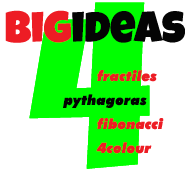LIFE in the 1500s
Most people got married in June because they took their yearly bath in May and were still smelling pretty good by June.
However, they were starting to smell, so brides carried a bouquet of flowers to hide the B.O.
Baths equaled a big tub filled with hot water.
The man of the house had the privilege of the nice clean water, then all the other sons and men, then the women and finally the children.
Last of all the babies. By then the water was so dirty you could actually lose someone in it.
Hence the saying, "Don't throw the baby out with the bath water".
Houses had thatched roofs. Thick straw, piled high, with no wood underneath.
It was the only place for animals to get warm, so all the pets... dogs, cats and other small animals, mice, rats, bugs lived in the roof.
When it rained it became slippery and sometimes the animals would slip and fall off the roof.
Hence the saying, "It's raining cats and dogs."
There was nothing to stop things from falling into the house.
This posed a real problem in the bedroom where bugs and other droppings could really mess up your nice clean bed.
So, they found if they made beds with big posts and hung a sheet over the top, it addressed that problem.
Hence those beautiful big 4 poster beds with canopies.
The floor was dirt. Only the wealthy had something other than dirt, hence the saying "dirt poor."
The wealthy had slate floors which would get slippery in the winter when wet. So they spread thresh on the floor to help keep their footing.
As the winter wore on they kept adding more thresh until when you opened the door it would all start slipping outside.
A piece of wood was placed at the entry way, hence a "thresh hold".

They cooked in the kitchen in a big kettle that always hung over the fire. Every day they lit the fire and added things to the pot.
They mostly ate vegetables and didn't get much meat.
They would eat the stew for dinner leaving leftovers in the pot to get cold overnight and then start over the next day.
Sometimes the stew had food in it that had been in there for a month.
Hence the rhyme: peas porridge hot, peas porridge cold, peas porridge in the pot nine days old."
Sometimes they could obtain pork and would feel really special when that happened.
When company came over, they would bring out some bacon and hang it to show it off.
It was a sign of wealth and that a man "could really bring home the bacon."
They would cut off a little to share with guests and would all sit around and "chew the fat."
Those with money had plates made of pewter. Food with a high acid content caused some of the lead to leach onto the food.
This happened most often with tomatoes, so they stopped eating tomatoes ... for 400 years.
Most people didn't have pewter plates, but had trenchers - a piece of wood with the middle scooped out like a bowl.
Trenchers were never washed and a lot of times worms got into the wood.
After eating off wormy trenchers, they would get "trench mouth."
Bread was divided according to status.
Workers got the burnt bottom of the loaf, the family got the middle, and guests got the top, or the "upper crust".
Lead cups were used to drink ale or whiskey. The combination would sometimes knock them out for a couple of days.
Someone walking along the road would take them for dead and prepare them for burial.
They were laid out on the kitchen table for a couple of days and the family would gather around and eat and drink and wait and see if they would wake up.
Hence the custom of holding a "wake".
England is old and small, and they started running out of places to bury people.
So, they would dig up coffins and would take the bones to a house and reuse the grave.
In reopening these coffins, one out of 25 coffins were found to have scratch marks on the inside and they realized they had been burying people alive.
So they thought they would tie a string on the wrist of the dead person and lead it through the coffin and up through the ground and tie it to a bell.
Someone would have to sit out in the graveyard all night to listen for the bell.
Hence on the "graveyardshift" they would know that whether someone was "saved by the bell" or whether he was a "dead ringer
© Cathy Brown 1998 - 2025 © All images & Videos Cathy Brown Located in Sydney NSW Australia all rights reserved.
No unauthorised reproduction without written permission. Webmaster & Designer - Cathy L. Brown
Virtual Teacher is committed to ensuring that our AI systems & assistants are used responsibly & ethically. Our AI is designed to support educators & students by providing personalized learning experiences, enhancing engagement & promoting understanding. We prioritize the safety, privacy, & security of our users, ensuring that our AI tools operate transparently & align with the best practices in the industry.
The NSW AI AssessmentFramework requires self assessment to deterimin Determine whether your system / project should use the AIAF. All AI projects used by Virtual TEacher are Low Risk or No Risk applications. Check out the Risk Evaluation page attached.


